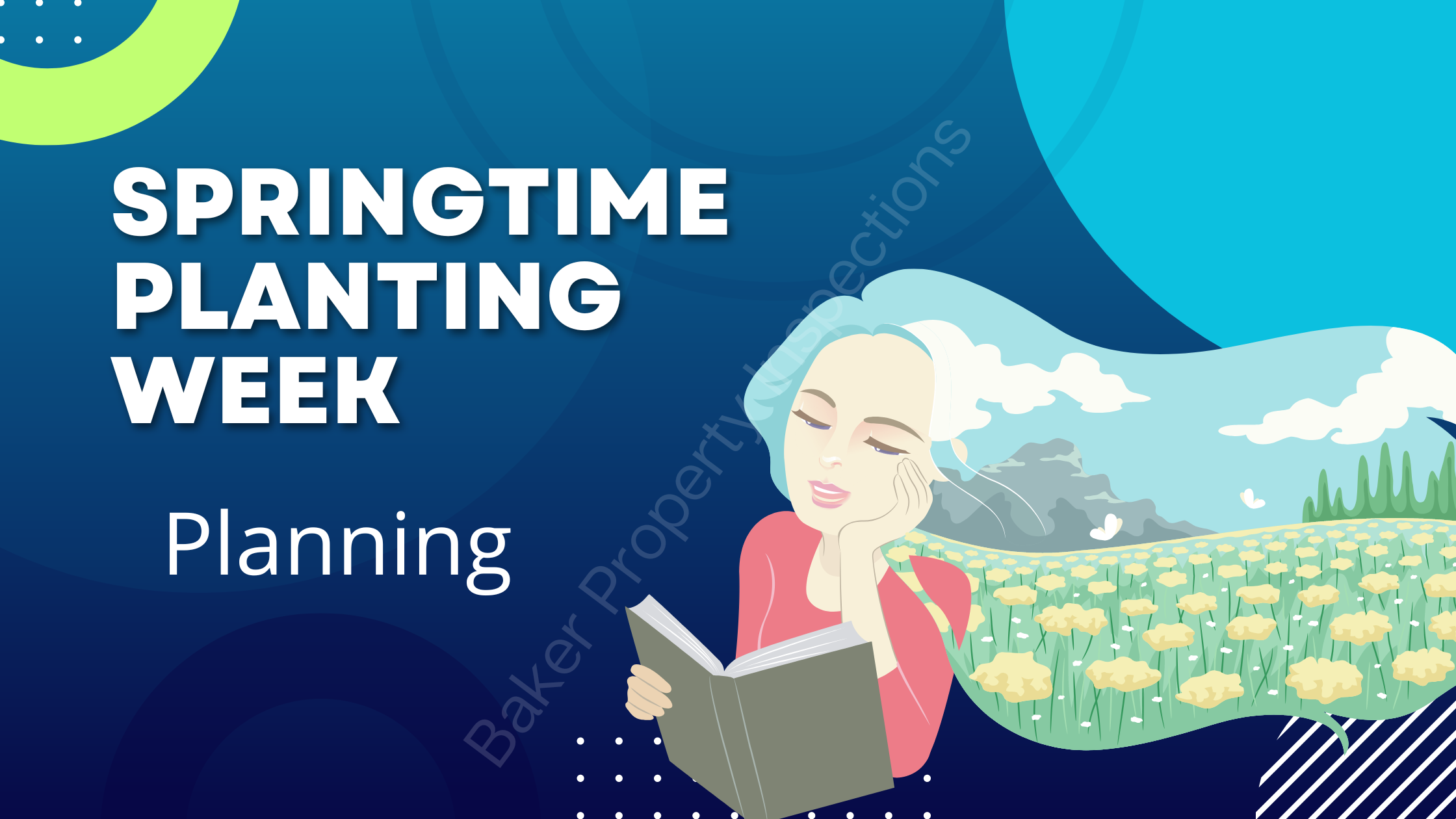Our Homeowners Blog goes beyond Home Inspections to discuss many topics related to home ownership. Every day, I talk with prospective buyers about their pending home decision, and many aspects of the home come into consideration. A home’s landscaping can cause buyers to make assumptions about the maintenance of the home itself. In many cases, an unkempt outdoor space does in fact indicate a poorly maintained home.
Well-designed landscaping enhances the aesthetics of the property, increases property value, and provides a private and peaceful outdoor living space where homeowners can relax, entertain, and enjoy the natural beauty of Michigan’s landscapes. So, are you ready to get to work? Let’s get started improving the space around our homes.
Springtime Planting Week
PLANNING
Planning ahead for spring planting is an important (and fun!) step to ensure that you have a successful and productive garden and/or landscape. Here are some tips to help you plan your own beautiful Michigan landscaping:
STEP ONE: Determine your planting zone:
The first step in planning for spring planting is to determine your planting zone. This will help you identify the best time to start planting and the type of plants that will grow best in your area. A planting zone, also known as a hardiness zone, is a geographic region in which particular types of plants are most likely to grow well. These zones are determined based on the average minimum winter temperature in a particular area, and they provide a useful guide for gardeners to determine which plants are most likely to thrive in their region.
Southwest Michigan is ZONE 6B. This means that plants labeled ANNUALS will live only one year due to our winter cold. PERENNIALS will come back every year if you care for them properly.
STEP TWO: Create a garden layout:
Sketch out a plan for your garden, including the placement of plants, pathways, and any garden structures or features you plan to include. Keep in mind that preparing beds takes work and some additional money. In addition, consider how many plants you realistically want to care for over the course of the summer. Most plants, even native ones, require watering regularly in the first year.
STEP THREE: Decide what to plant:
Decide what plants you want to grow in your garden. Plants are living organisms that need specific conditions in order to thrive. These are some factors to consider.
Light: Plants that are labeled “SUN LOVING” typically need a minimum of 6 hours of direct sunlight to grow well and bloom. Those that prefer SHADE will burn, wilt, and suffer in sunny conditions but may be very happy in an early morning or evening sun. You should create a “light map” by identifying planting areas and monitoring whether or not they are in direct sun at several points throughout the day. Of course the time of year will matter, as will trees budding out, so take those things into consideration.
Soil: Consider the type of soil you have. If you have poor-quality, sandy or dense clay soil, you should choose native plants that thrive in these soils, or you should plan to supplement any plants with healthy soil, which means digging holes at least 3x the size of the plant’s pot.
Water: If you do not plan to supplement plants with deep watering, which can be expensive, it’s critical that you choose drought-loving plants, and even these will need to be watered well the first year or two so they can get established.
Color, Style, and Permanence: Think about your own personal style when selecting plants. Take a trip to a local greenhouse to get ideas and identify favorites, then return with a plan to actually purchase plants. Do you prefer a unified color scheme throughout? Or prefer a more colorful look? Will you choose annuals or perennials? Do you want to attract butterflies or birds?
Start your search with a little googling! These are just a few examples of the many plants native to Michigan that can enhance your landscaping.
Wild Columbine (Aquilegia canadensis) – This perennial plant has unique red and yellow flowers that attract hummingbirds and butterflies.
Purple Coneflower (Echinacea purpurea) – This tough, drought-tolerant plant produces beautiful purple-pink flowers and is a favorite of bees and butterflies.
Black-eyed Susan (Rudbeckia hirta) – With bright yellow petals and a dark center, this perennial flower is a classic choice for adding color to your garden.
American Hazelnut (Corylus americana) – This shrub produces delicious nuts and has attractive, textured foliage that turns yellow in the fall.
Big Bluestem (Andropogon gerardii) – This native grass can grow up to 8 feet tall and has attractive blue-green foliage that turns bronze in the fall. It also provides habitat for many wildlife species.
We love exploring new greenhouses across Michigan to discover new plant varieties! Here are some to consider:
Kalamazoo Area Greenhouses we love:
Wenke Greenhouses: https://wenkegardencenter.com/
River Street Flowerland: https://riverstreetflowerland.com/
Wedel’s Nursery, Florist and Garden Center: https://www.wedels.com/
Lakeshore Greenhouses we love:
Jonker’s Garden (Holland): https://www.jonkersgarden.com/
North Shore Garden (South Haven): http://northshoregarden.com/
Barbott Farms and Greenhouse (Stevensville): http://www.barbott.com/
Van Buren County Greenhouses we love:
The Briar Patch (Mattawan): http://briarpatchgreenhouse.com/
Dragonfly Gardens (Mattawan): https://www.dragonflygardensgreenhouse.com/
Grand Rapids Greenhouses we love:
Romence Gardens & Greenhouses: https://romencegardens.com/
What’s your favorite PureMichigan greenhouse? Leave it in the comments! We’d love to check it out.
#FriendlyExperiencedThorough


2 Responses
I am really impressed together with your writing talents and also with the format in your blog. Is this a paid topic or did you customize it your self? Anyway keep up the excellent quality writing, it’s rare to look a nice weblog like this one nowadays!
Thank you so much! This is our original writing based on some research, but mostly our own expertise. Audrey’s parents owned a landscaping company for decades, and we are avid gardeners ourselves. We sure appreciate the feedback!!